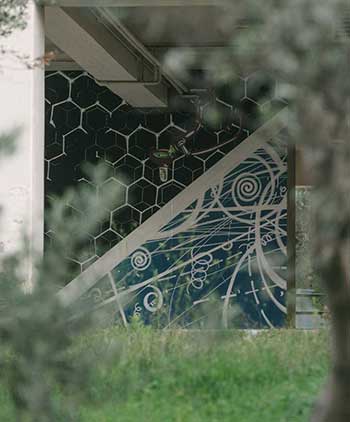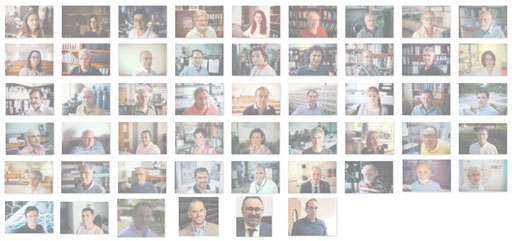- Τμήμα
Διοίκηση

- Προσωπικό
- Σπουδές
Σπουδές στο ΤΧΜ
Προπτυχιακά
Διπλωματικές Εργασίες
Μεταπτυχιακά
Διδακτορικό Δίπλωμα (PhD)
- Γενικές Πληροφορίες
- Νέες Αιτήσεις
- Κανονισμός
- Μαθήματα
- Προφορική Παρουσίαση
- Έρευνα
- Υποστήριξη Διατριβής
- Προηγούμενες Διατριβές
- Πρόγραμμα Εξετάσεων
Μεταπτυχιακό Πρόγραμμα (MSc)
Διατμηματικό ΠΜΣ (MSc)
- Φοιτητές
- Απόφοιτοι
- Έρευνα

Ερευνητική Δραστηριότητα στο ΤΧΜ
- Νέα & Εκδηλώσεις

Ανακοινώσεις
PhD Thesis Defence Presentations - Georgios Manthos

Τίτλος Παρουσίασης (Presentation Title): Holistic management of olive oil production by-products for energy production and useful products in the context of the Circular Economy
Presentation Type (Τύπος Παρουσίασης): Υποστήριξη Διδακτορικής Διατριβής
Ονοματεπώνυμο Ομιλητή (Speakers Full Name): Γεώργιος Μάνθος
Προέλευση Ομιλητή (Speakers Affiliation): University of Patras, Department of Chemical Engineering
Seminar Room (Αίθουσα): Βιβλιοθήκη "Αλκιβιάδης Χ. Παγιατάκης"
Ημερομηνία: Πέμ, 02 Νοε 2023,
Ώρα:
15:00 - 18:00
Περίληψη (Abstract)
During the olive oil production process, about 20% of the weight of the olive fruit corresponds to olive oil and about 80% corresponds to a waste stream. Olive oil extraction can be carried out in three different ways depending on the types and characteristics of the waste produced: (a) traditional pressing, (b) two-phase, where olive oil and two-phase olive pomace are obtained, and (c) three-phase, where olive oil, kernel, and three-phase olive mill wastewater are obtained.
Oil mill wastes are some of the most important waste streams in the Mediterranean countries, with uncontrolled land disposal without treatment having a significant impact. The presence of phenols in these waste streams has a negative effect on both crop growth and the micro-organisms present in the soil. In addition, their high organic content contributes significantly to environmental degradation in areas of uncontrolled disposal. There are no specific management methods for these types of waste, with most of them ending up uncontrolled in the soil and water bodies, creating many social and environmental problems. A common management practice for two-phase olive pomace is to use it for kernel oil production in kernel oil extraction facilities, after its storage in open tanks.
During the storage of olive pomace, malodorous compounds, such as 4-ethylphenol, are formed and released into the atmosphere during the drying process of olive pomace, causing serious problems over a radius of several kilometers. At the same time, the increased microbial activity in the stored olive pomace deteriorates the kernel oil, diminishing its value. This deterioration is expressed in an increase in its acidity. During the experimental study of the acidification of olive kernel to prevent the odor and reduce the acidity of the kernel oil, the maximization of the concentration of 4-ethylphenol in the untreated olive pomace after 23 days of storage was observed, while the acidity of the kernel oil was reached a plateau at 10% after 70 days of storage. Acidification of the olive kernel at pH 2 prevented the production of 4-ethylphenol while maintaining the acidity of the kernel oil at 5% for over 100 days of storage.
In the study of mathematical modeling of the above-mentioned phenomenon, the overall 4-ethylphenol production process was divided into 4 individual enzymatic processes. The process included the release of p-coumaric acid from the lignocellulosic material, the decarboxylation of p-coumaric acid to 4-vinyl phenol, and finally the reduction of 4-vinyl phenol to 4-ethylphenol. Michaelis-Menten kinetics were used to describe the concentrations of the compounds with the addition of enzyme concentration inducibility and activity inhibition from pH. The trained model was able to predict the concentration of 4-ethylphenol as a function of time and storage pH, using only the initial concentrations of p-coumaric acid, 4-vinyl phenol (intermediary product), and 4-ethylphenol.
Apart from the solid two-phase olive pomace, olive mill wastewater is one of the most common liquid effluent streams causing environmental problems in Mediterranean countries. Anaerobic digestion has been widely used to treat various waste streams, from industrial effluents to agricultural and livestock residues. Some of the advantages of this process are related to the production of renewable electricity and fertilizer. During the experimental optimization of the organic loading rate in UASB-type reactors treating olive mill effluents, the stability of the system at organic loading rates 5-6 gCOD LR-1 d-1, without any pretreatment was observed. Furthermore, it was exhibited that the long acclimation period of the reactor inoculum in olive mill wastewater improved the degradation of phenolic components inside the reactor, which reached 59%.
Five different operation scenarios were studied during the aerobic treatment of solid olive mill effluents, such as olive leaves, two-phase olive pomace, and solid anaerobic digestion effluent, in a continuous high-rate composter. These scenarios differed in terms of the two-phase olive pomace to olive leaves ratio and the presence or absence of pine tree bark and digested anaerobic sludge. A ratio of 95% to 5% w/w of olive pomace to olive leaves showed the best results in terms of product quality, while olive leaves as a substrate appeared to be able to act as a bulking agent for better aeration of the material. The final product in the optimum feed ratio was free of Salmonella, was stable in terms of static respiratory index (lower than 0.5 g O2 kgVS-1 h-1) but contained elevated E. Coli levels (3.5 ×104 CFU g-1 with a limit of 1 ×103 CFU g-1), which was the only EU proposed compost quality criteria not met.
The study of the environmental sustainability of an anaerobic digestion plant treating olive mill wastewater indicates that the proposed process has environmental benefits compared to the baseline scenarios (treatment in evaporation lagoons, direct disposal, and discharge to water recipients). Based on the environmental hotspot analysis, the application of digestate as fertilizer presented environmental issues in the damage categories of terrestrial acidification and water eutrophication. Anaerobic digestion can prevent environmental damage of 5 mPt per 1000 kg of waste through the products formed.
Finally, during the study of the economic sustainability of an anaerobic digestion unit for olive mill wastewater treatment, it was exhibited that a centralized treatment plant that will process olive mill waste during the olive season, and other agro-industrial by-products the rest of the year, can be viable at the level of waste management of a prefecture. The internal rate of return was estimated at 6% and the net present was estimated at 2 million euros. Furthermore, it was exhibited through the sensitivity analysis that the selling price of the electricity produced, and the productivity of the waste processed in the plant alongside the olive mill wastewater are the main factors influencing the viability of the process.
Σύντομο Βιογραφικό Ομιλητή (Speakers Short CV)
Speakers Short CV
Full name: Georgios Manthos
Date of Birth: 22-08-1994
e-mail: geomanthos56@hotmail.com
Education
2020-present: PhD candidate, Department of Chemical Engineering, University of Patras
Thesis title: “Holistic management of olive oil production by-products for energy production and useful products in the context of the Circular Economy”
(Defense is expected at November of 2023)
Supervisor: Michael Kornaros, Professor of the Chemical Engineering department of the University of
Patras
2018-2020: Master’s degree in Energy and Environment, Department of Chemical Engineering, University of Patras
Thesis title: “Kinetic study and mathematical modeling of bioethanol production from food waste”
Supervisor: Michael Kornaros, Professor of the Chemical Engineering department of the University of
Patras
2012-2018: Diploma in Chemical Engineering, Department of Chemical Engineering, University of
Patras
Thesis title: “Anaerobic co-digestion of used diapers with food waste in a CSTR-type bioreactor”
Supervisor: Michael Kornaros, Professor of the Chemical Engineering department of the University of
Patras
Scholarships- Honors-Patents
- Patent publication: M. Kornaros, D. Zagklis, G. Manthos, “Stabilization method of two-phase olive pomace by adding a suitable solution of reagents and homogenization”, GR1010316B, 05/10/2022
- Patent publication: C. Zafiri, M. Kornaros, D. Zagklis, K. Tsigkou, G. Manthos, “Method for the treatment of the liquid agroindustrial effluents via a rapid anaerobic digestion system for biogas production”, GR20210100658A, 05/10/2023
- Full scholarship for PhD research and thesis, implemented under the Action “3rd Call for H.F.R.I.
Research Projects to support Faculty Members and Researchers” funded by Hellenic Foundation for Research and Innovation
- First prize award for oral presentation during the 5th Workshop of Graduates & Post-Docs in Chemical Engineering Sciences, Patras, 06/09/2019
Participation in Organizations
Member of the Technical Chamber of Greece (Chemical Engineer license, June 2018)
Languages
English (B2)
French (B1)
Teaching Experience
- Teaching Assistant in “Plant design” course, Department of Chemical Engineering, University of Patras, spring semester 2021-2022
- Teaching Assistant in “Physical and Chemical processes” laboratory, Department of Chemical Engineering, University of Patras, spring semester 2020-2021
- Teaching Assistant in “Process dynamics and control” course, Department of Chemical Engineering, University of Patras, spring semester 2017-2018
- Co-supervision of 11 diploma theses
Participation in Research projects
- “Lignogas”, “Study of the utilization of lignin for energy recovery through anaerobic digestion” implemented under the Action “3rd Call for H.F.R.I. Research Projects to support Faculty Members and Researchers” funded by Hellenic Foundation for Research and Innovation, Code 06822
- “OLIVENERGY”, “Integrated energy and environmental exploitation of olive oil production byproducts”, “Western Greece 2014-2020”, under the Call “Regional Research and Innovation Strategies for Smart Specialization (RIS3) in Agro-food”, project: DER6-0021057
- “Green.BMP”, “Development of an innovative integrated system for estimating the biochemical methane potential (BMP) of different biomass sources”, under the call RESEARCH – CREATE – INNOVATE, project: T1EDK-03148
- “SAFOOD”, “Upgrading of Olive Pomace Processing Plant Focused on Products with High Added Value”, “Western Greece 2014-2020”, under the Call “Regional Research and Innovation Strategies for Smart Specialization (RIS3) in Agro-food”, project: DER6-022691
Publications in International Peer-Reviewed Scientific Journals
[a.1] G. Manthos, D. Zagklis, C. Zafiri, and M. Kornaros, “Comparative life cycle assessment of anaerobic digestion, lagoon evaporation, and direct land application of olive mill wastewater”, Bioresource Technology, 2023, 129778
[a.2] G. Manthos, D. Zagklis, V. Papavasileiou, N.A. Gkountou, Z. Saita, C. Zafiri, and M. Kornaros, “High-rate upflow anaerobic sludge blanket bioreactor for the treatment of olive mill effluents: Laboratory and pilot scale systems investigation”, Renewable Energy, 2023, 119215
[a.3] G. Manthos, L. Abbaszadeh, D. Zagklis, M. Kornaros, “Mathematical Modeling of Nitrification in Mixed Cultures: Insights into Nitrite-Oxidizing Bacteria Growth and Ammonia Starvation Effect”, Fermentation 9 (7), 2023, 681
[a.4] G. Manthos, M. Dareioti, D. Zagklis, M. Kornaros, “Using biochemical methane potential results for the economic optimization of continuous anaerobic digestion systems: the effect of substrates’ synergy”, Renewable Energy 211, 2023, 296-306
[a.5] G. Manthos, D. Zagklis, S.S. Ali, C. Zafiri, M. Kornaros, “Techno-Economic Evaluation of the Thermochemical Energy Valorization of Construction Waste and Algae Biomass: A Case Study for a Biomass Treatment Plant in Northern Greece”, Processes 11 (5), 2023, 1549
[a.6] G. Manthos, E. Koutra, S. G. Mastropetros, D. Zagklis, and M. Kornaros, “Mathematical Modeling of Microalgal Growth during Anaerobic Digestion Effluent Bioremediation”, Water, 2022, 14, p. 3938
[a.7] G. Manthos, D. Zagklis, M. Papapanou, C. Zafiri, and M. Kornaros, “High-rate in-vessel continuous composting of olive mill byproducts”, Waste Management, 2022, 151, pp.105-112
[a.8] G. Manthos, D. Zagklis, and M. Kornaros, “Mathematical modeling of the effect of pH on 4ethylphenol formation during two-phase olive pomace storage”, Biochemical Engineering Journal, 2022, 186, p.108552
[a.9] D. Mitrogiannis, M. Psychogiou, G. Manthos, K. Tsigkou, M. Kornaros, N. Koukouzas, D.
Michailidis, D. Palles, E.I. Kamitsos, C. Mavrogonatos, and I. Baziotis, "Phosphorus and potassium recovery from anaerobically digested olive mill wastewater using modified zeolite, fly ash and zeolitic fly ash: a comparative study”, Journal of Chemical Technology & Biotechnology, 2022
[a.10] P. Tsafrakidou, G. Manthos, D. Zagklis, J. Mema, M. Kornaros, “Assessment of substrate load and process pH for bioethanol production–Development of a kinetic model”, Fuel, 2022, 313, 123007
[a.11] G. Manthos, D. Zagklis, K Mesisklis, M Kornaros, “Effect of two-phase olive pomace acidification on odor prevention and kernel oil acidity reduction as a function of storage duration”, Journal of Environmental Management, 2021, 298:113453
[a.12] K. Tsigkou, D. Zagklis, P. Tsafrakidou, P. Zapanti, G. Manthos, K. Karamitou, C. Zafiri, M. Kornaros, “Expired food products and used disposable adult nappies mesophilic anaerobic co-digestion: biochemical methane potential, feedstock pretreatment and two-stage system performance”, Renewable Energy, 2021, 168: 309-318
Participation in International Conferences
[b.1] G. Manthos, D. Zagklis, C. Zafiri, M. Kornaros, “TECHNO-ECONOMIC AND ENVIRONMENTAL
SUSTAINABILITY ASSESEMENT OF ANAEROBIC DIGESTION OF OLIVEMILL
WASTEWATER”, 9th International Symposium on Energy from Biomass and Waste, VENICE 2022, Venice, Italy, November 2022
[b.2] G. Manthos, M. Dareioti, D. Zagklis, C. Zafiri, M. Kornaros, “MODELING OF THE SYNERGISTIC
EFFECTS OF OLIVE MILL WASTEWATER, CHEESE WHEY, AND LIQUID COW MANURE CO-
DIGESTION”, 9th International Conference on Engineering for Waste and Biomass Valorisation, Wasteeng2022, hybrid, Copenhagen, Denmark, June 2022
[b.3] G. Manthos, D. Zagklis, C. Zafiri, M. Kornaros, “HIGH-RATE UP-FLOW ANAEROBIC SLUDGE BLANKET (UASB) BIOREACTOR FOR THE TREATMENT OF OLIVE MILL EFFLUENTS”, 8th
International Conference on Engineering for Waste and Biomass Valorisation, Wasteeng2020, virtual, May 2021
[b.4] G. Manthos, D. Zagklis, M. Kornaros, “EFFECT OF 2-PHASE OLIVE WASTE ACIDIFICATION IN 4-ETHYLPHENOL FORMATION AND KERNEL OIL ACIDITY AS A FUNCTION OF WASTE STORAGE DURATION”, 8th International Conference on Engineering for Waste and Biomass Valorisation, Wasteeng2020, virtual, May 2021
Participation in National Conferences
[c.1] G. Manthos, D. Zagklis, M. Kornaros, “EFFECT OF 2-PHASE OLIVE WASTE ACIDIFICATION
IN 4-ETHYLPHENOL FORMATION AND KERNEL OIL ACIDITY AS A FUNCTION OF WASTE
STORAGE DURATION”, 13th Panhellenic Scientific Conference of Chemical Engineering, Patras, June 2022
[c.2] G. Manthos, D. Zagklis, P. Tsafrakidou and M. Kornaros, «Kinetic modelling of bioethanol production from Saccharomyces cerevisiae», 5th Workshop of Graduates & Post-Docs in Chemical Engineering Sciences, Patras, November 2019



